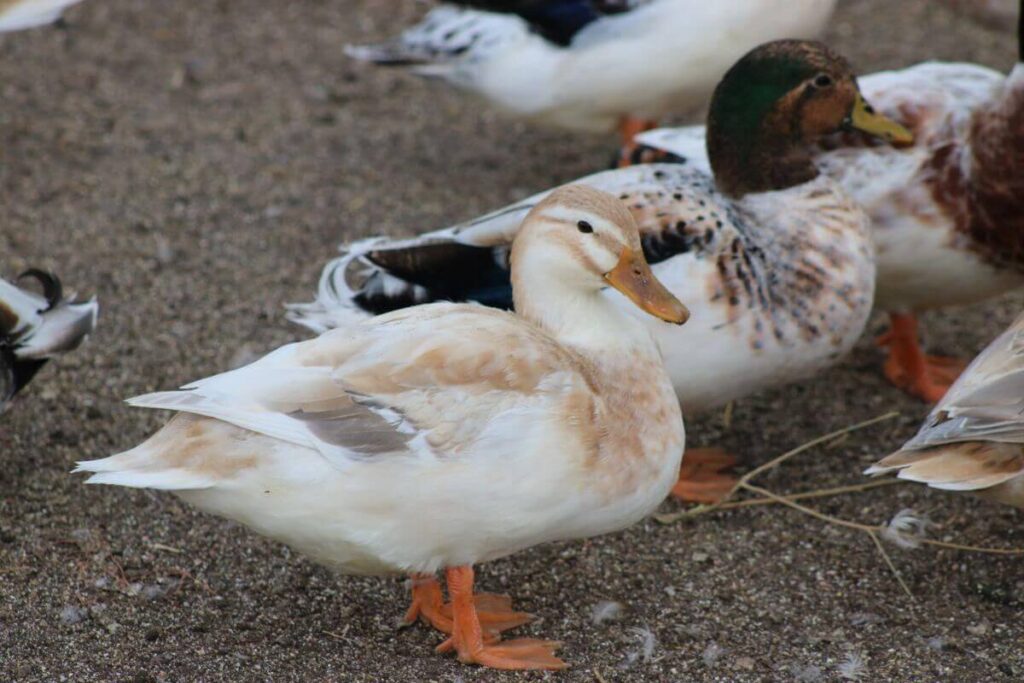Australian Spotted Duck

Scientific Name
Anas platyrhynchos domesticus
Alternative Names
Aussie Spotted, Australian Spotted Bantam Duck
Measurements:
| Feature | Male (Drake) | Female (Duck) |
|---|---|---|
| Weight | 0.9–1 kg (2.0–2.2 lb) | 0.8–0.95 kg (1.8–2.1 lb) |
| Body Shape | Teardrop-shaped, almost horizontal | Teardrop-shaped, almost horizontal |
| Size Class | True bantam duck | True bantam duck |
Status
A rare bantam duck breed developed in Pennsylvania, USA—despite its name suggesting Australian origins. Not officially recognized by the American Poultry Association.
Identification
Small, graceful ducks with a teardrop-shaped body, oval head, and horizontal stance. Unlike Call Ducks, they do not have a short bill or puffy cheeks. They come in three color types: Greenhead, Bluehead, and Silverhead. Drakes often have a white neck ring, burgundy chest, grey wings, and spotted feather patterns depending on variety.
Voice
Quieter than Call Ducks. Ducks (females) make louder quacks than drakes, but overall this breed is not excessively noisy.
Diet
Excellent foragers. They eat insects, snails, slugs, beetles, mosquito larvae, and weeds alongside basic duck feed.
Distribution
Originated in the United States in the 1920s. Still rare today and mainly kept by hobby breeders and duck enthusiasts.
Habitat
Adaptable to small farms, gardens, ponds, and backyard settings. Must be protected from predators due to small size and ability to fly.
Breeding
Good egg layers for a bantam breed—around 50 to 125 eggs per year, in cream, blue, or light green shades. Ducks mature early; drakes show courtship as young as 3–4 weeks. They breed true to type and can hatch their own eggs.
Wintering
Hardy and can tolerate cold conditions with proper shelter. Their small size means they need wind protection and dry bedding.
Conservation
Still uncommon and not widely available. Best suited for breeders, families, or hobbyists wanting to help preserve a rare bantam duck breed.
